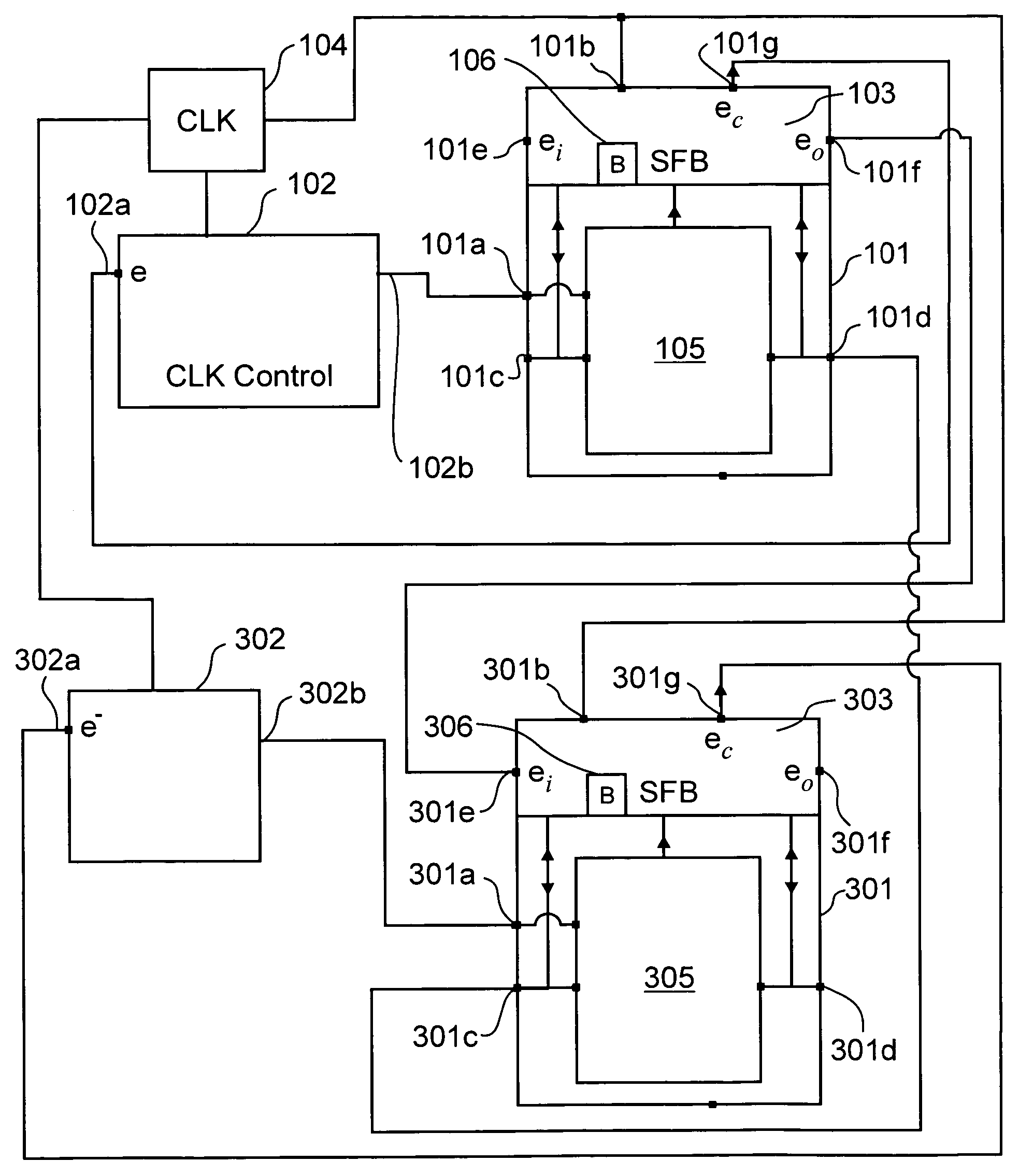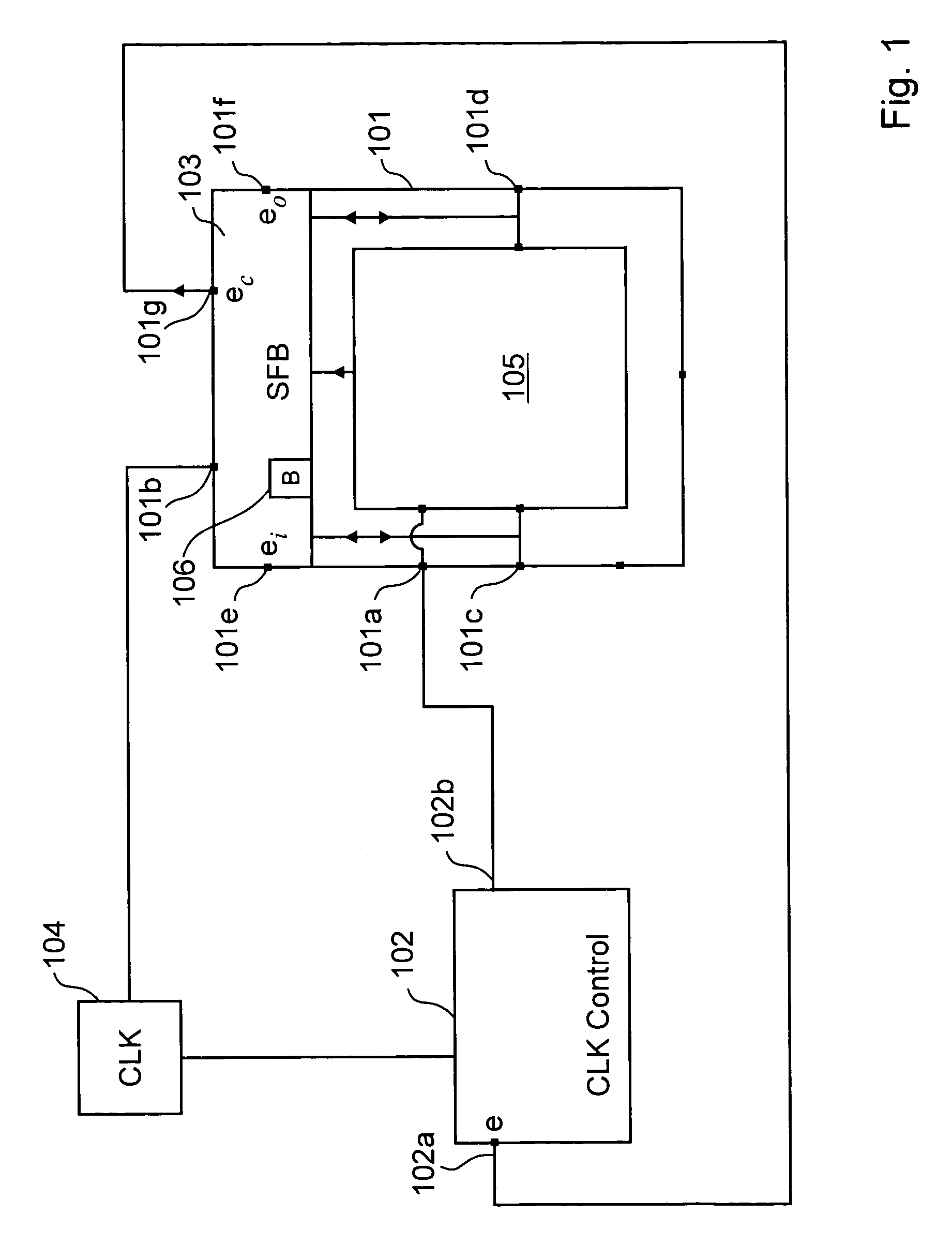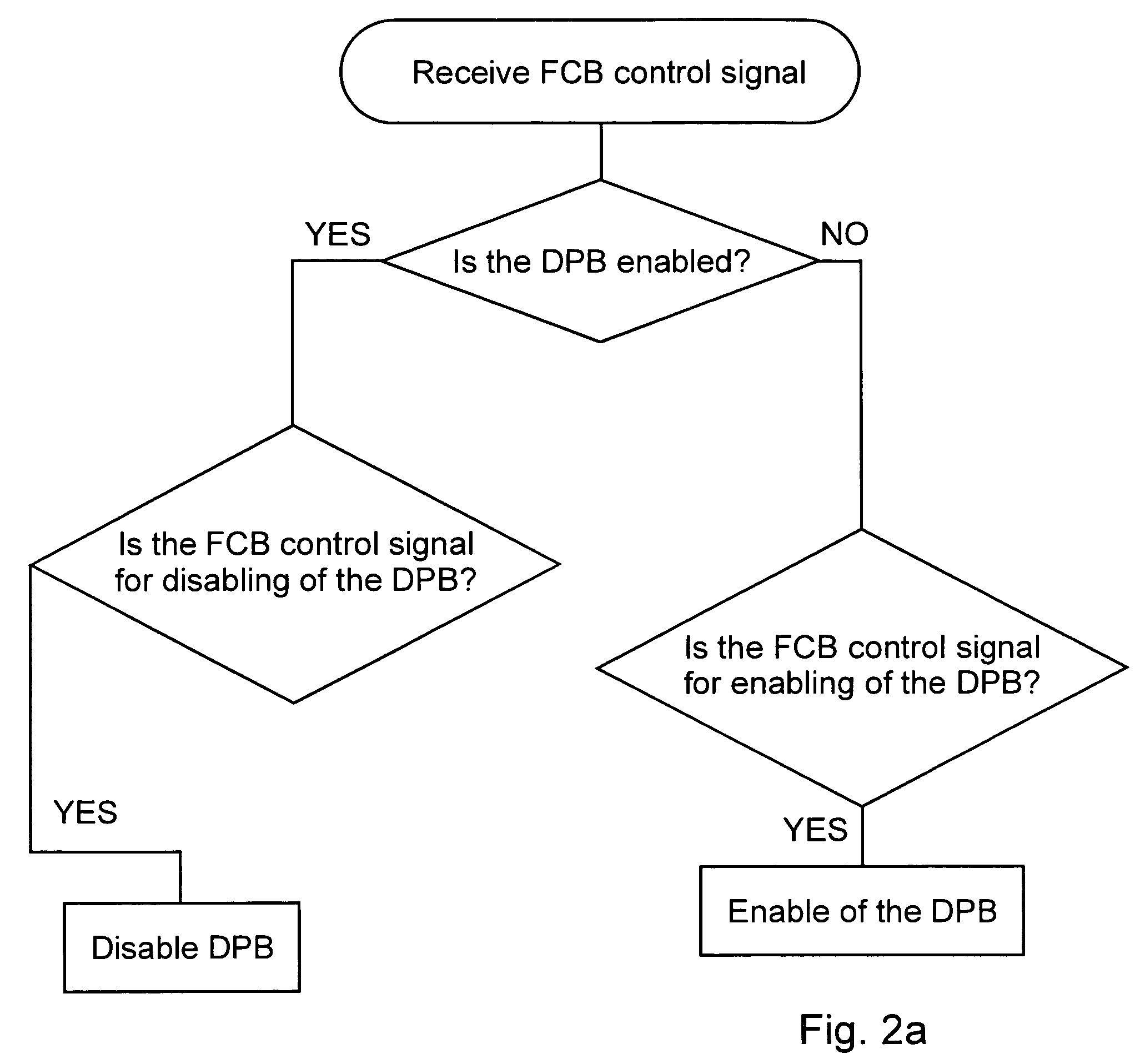On-demand clock switching
a clock circuit and clock technology, applied in the direction of generating/distributing signals, instruments, sustainable buildings, etc., can solve the problems of electrical power consumption of fcbs, become more difficult, etc., and achieve the effect of reducing the power consumption mode of operation
- Summary
- Abstract
- Description
- Claims
- Application Information
AI Technical Summary
Benefits of technology
Problems solved by technology
Method used
Image
Examples
Embodiment Construction
[0021]FIG. 1 illustrates an electrical circuit 100 comprised of a FCB 101, a clock control circuit 102 and a clock circuit 104. A sub-functional block (SFB) 103 is preferably disposed within the FCB 101 for implementing a clock control strategy. Additionally within the FCB 101 there is disposed a data processing block (DPB) 105 that is comprised of a majority of the internal circuitry of the FCB 101.
[0022]The clock circuit 104 provides a second clock signal to the clock control circuit 102 and a first clock signal to a SFB clock input port 101b disposed on the FCB 101. The first clock signal received on the SFB clock input port 101b is only for being received by circuitry forming the SFB 103. A FCB switched clock input port 101a is disposed on the FCB 101 for receiving of the switched second clock signal from an output port 102b of the clock control circuit 102. The switched second clock signal is for being received by the DPB 105 disposed within the FCB 101. A clock control port 10...
PUM
 Login to View More
Login to View More Abstract
Description
Claims
Application Information
 Login to View More
Login to View More - R&D
- Intellectual Property
- Life Sciences
- Materials
- Tech Scout
- Unparalleled Data Quality
- Higher Quality Content
- 60% Fewer Hallucinations
Browse by: Latest US Patents, China's latest patents, Technical Efficacy Thesaurus, Application Domain, Technology Topic, Popular Technical Reports.
© 2025 PatSnap. All rights reserved.Legal|Privacy policy|Modern Slavery Act Transparency Statement|Sitemap|About US| Contact US: help@patsnap.com



